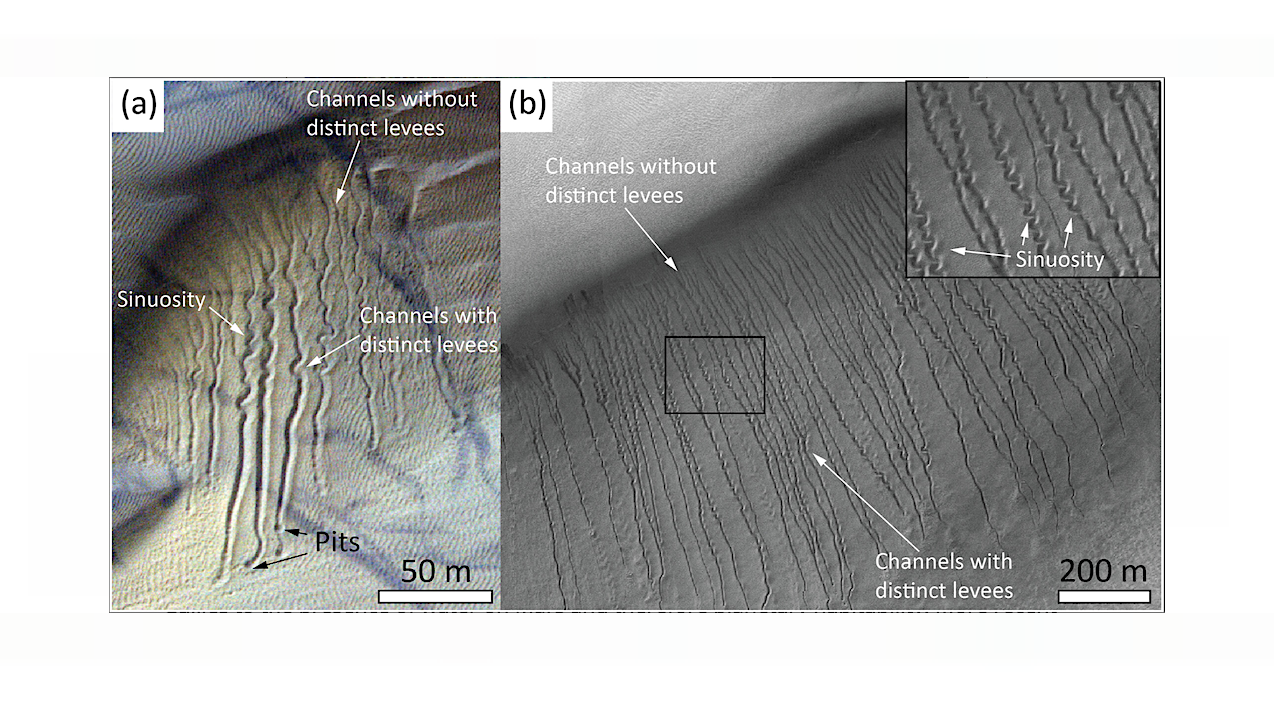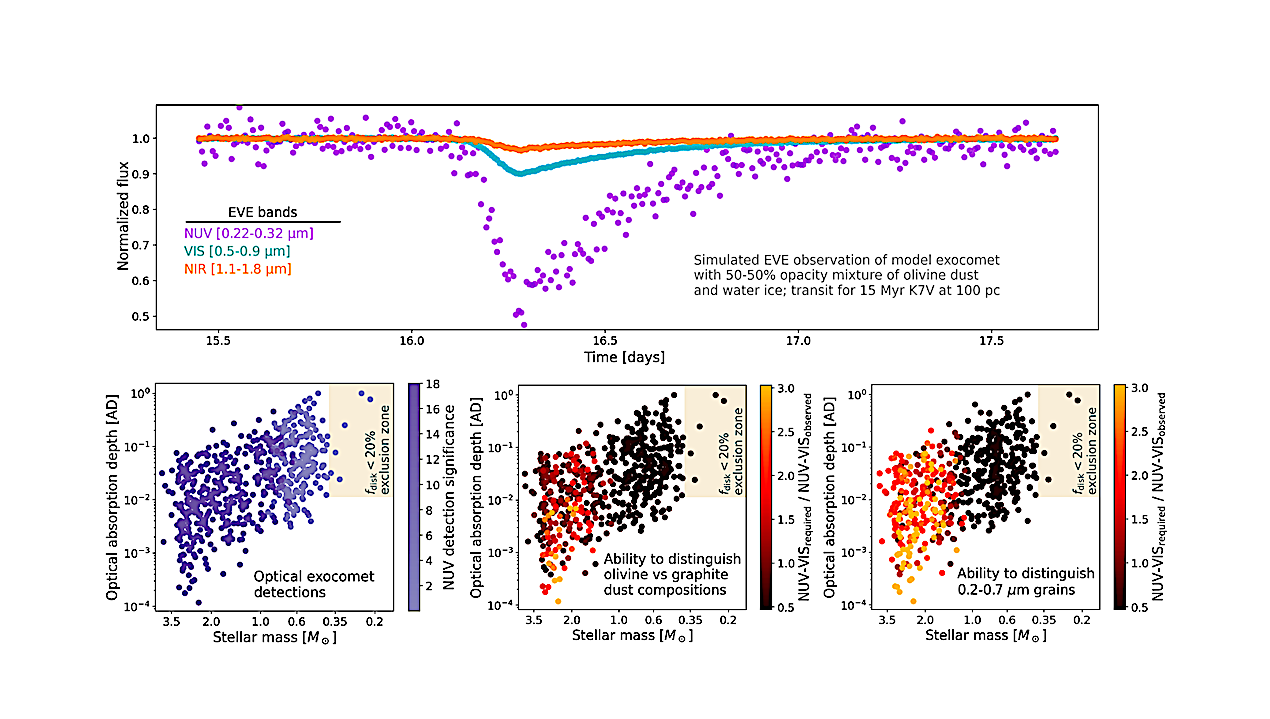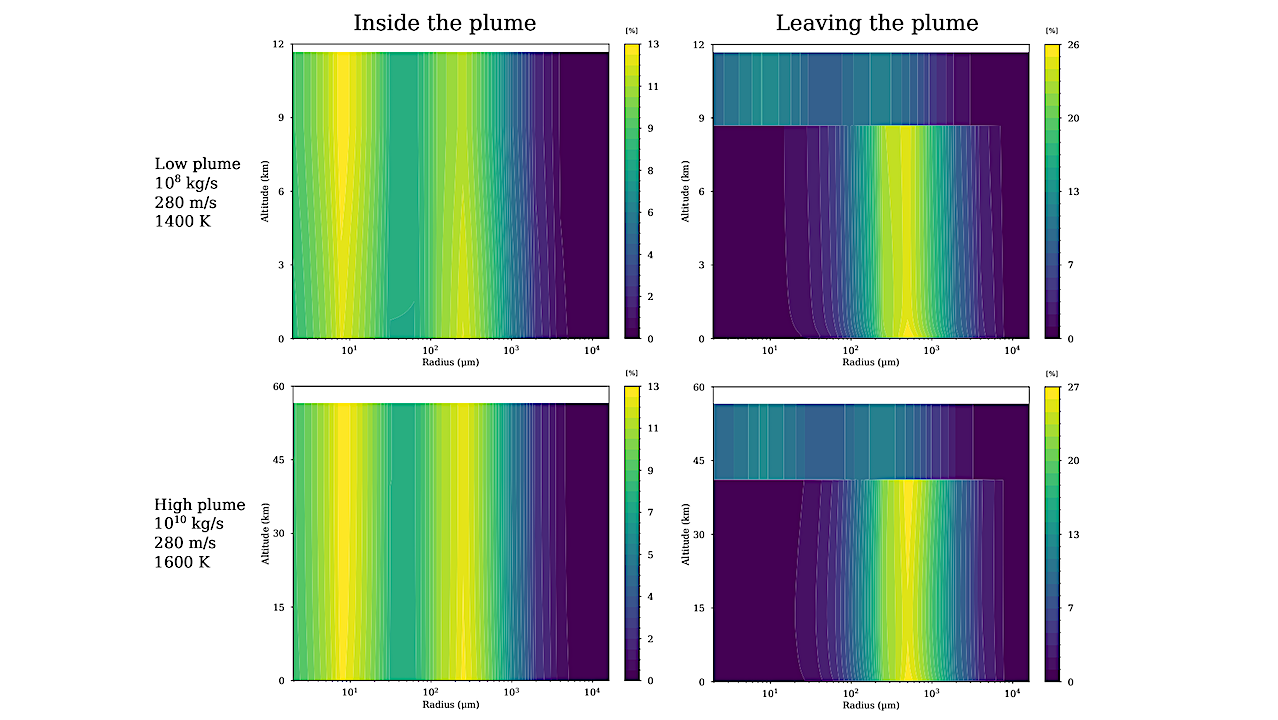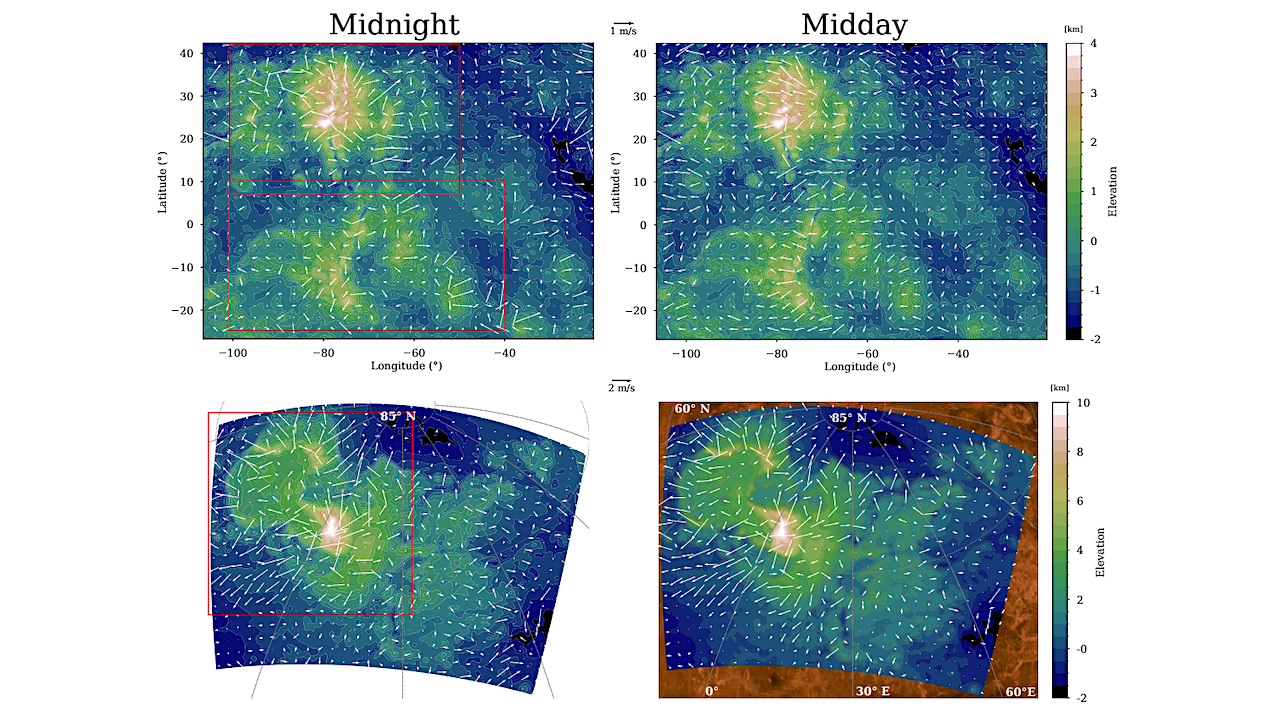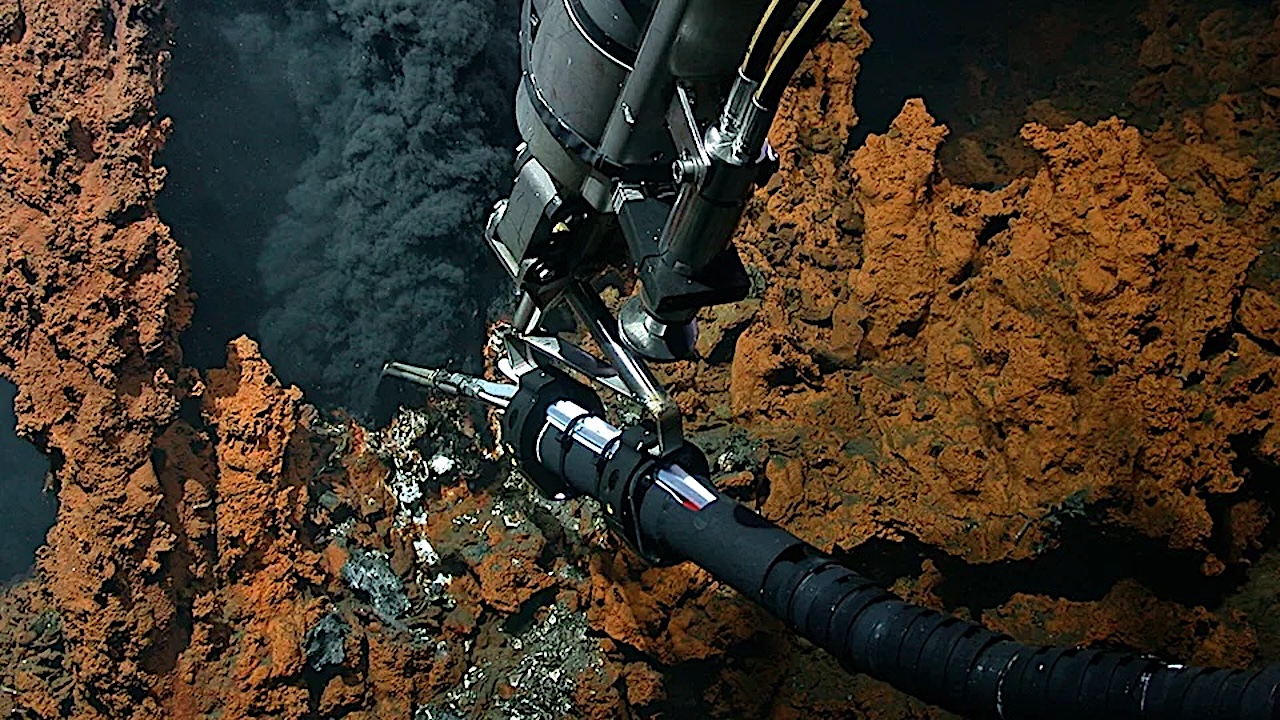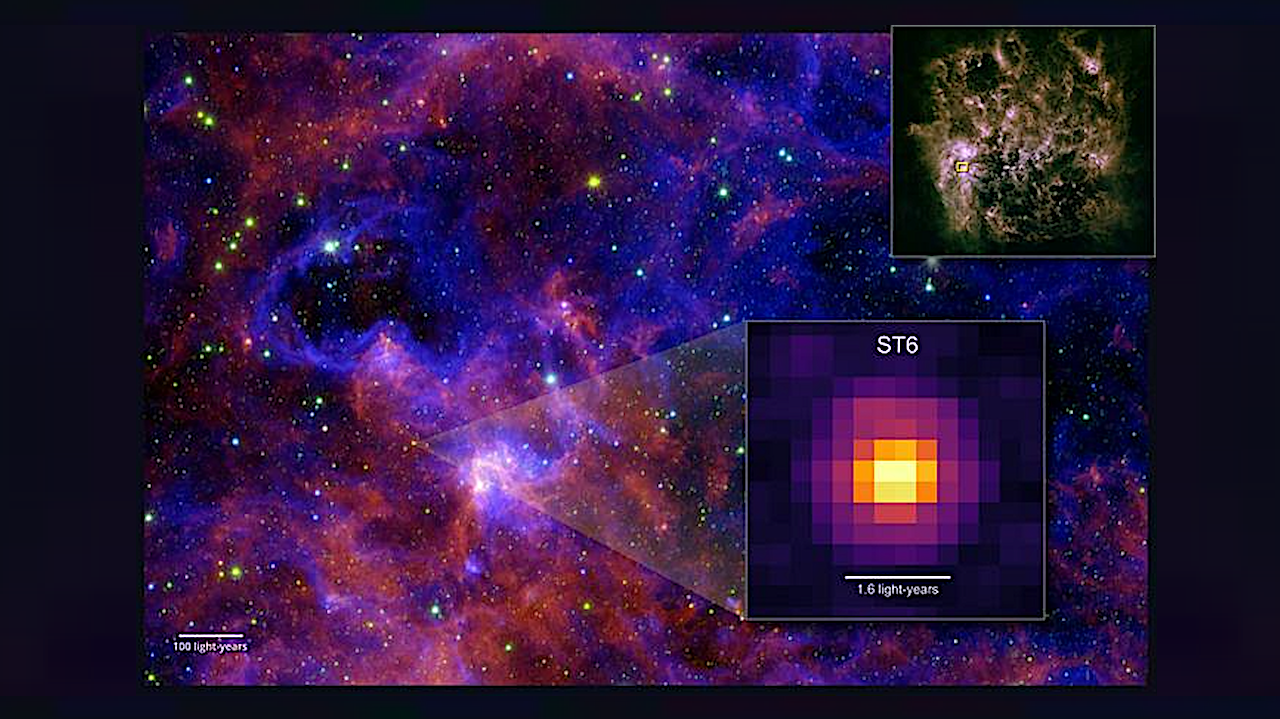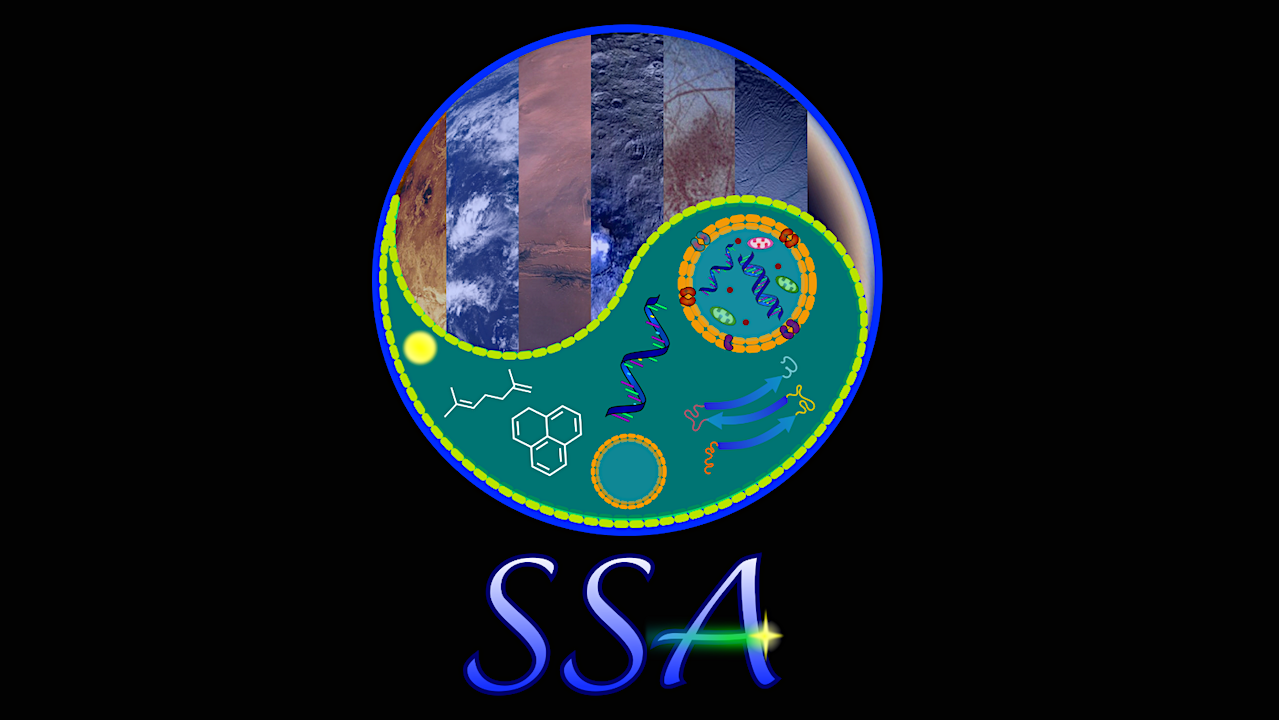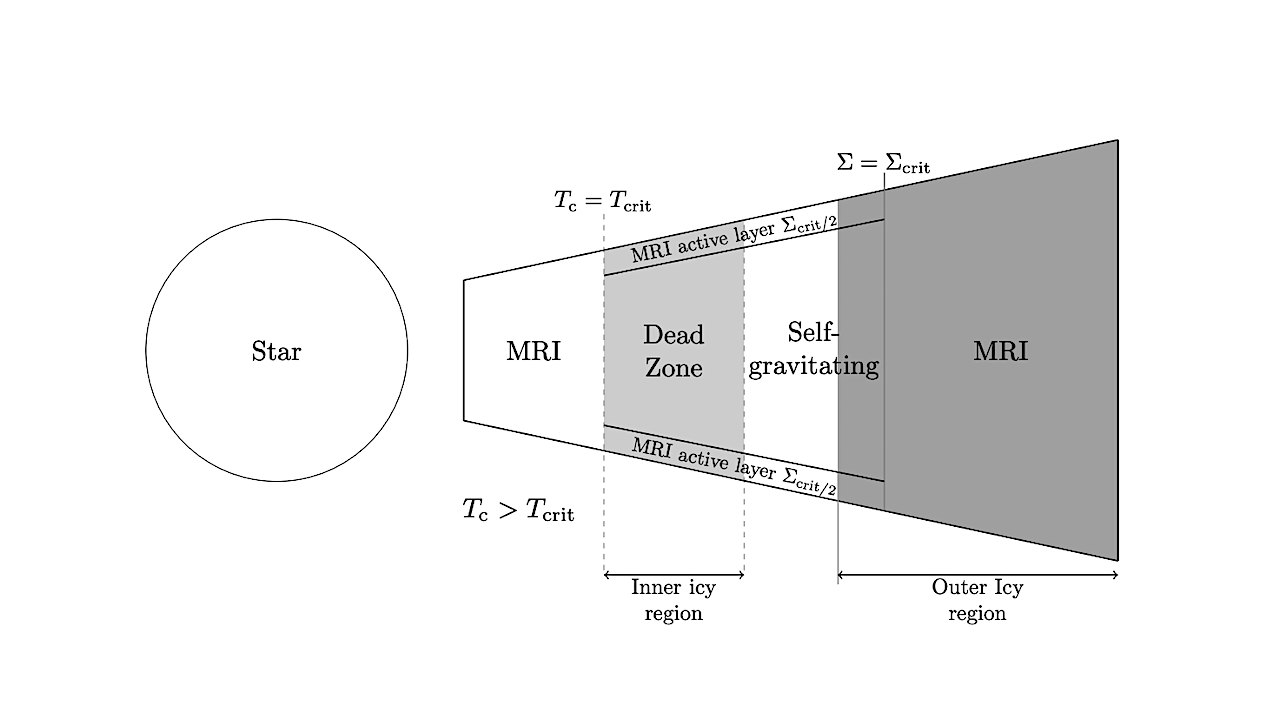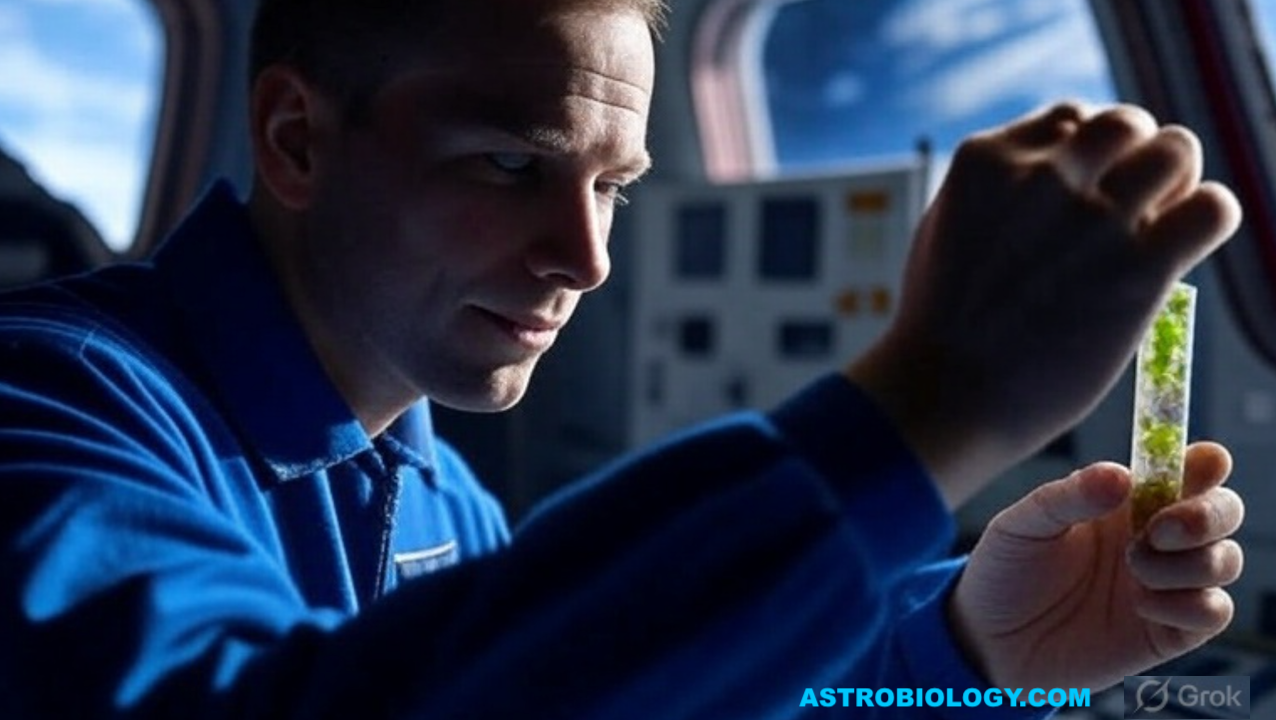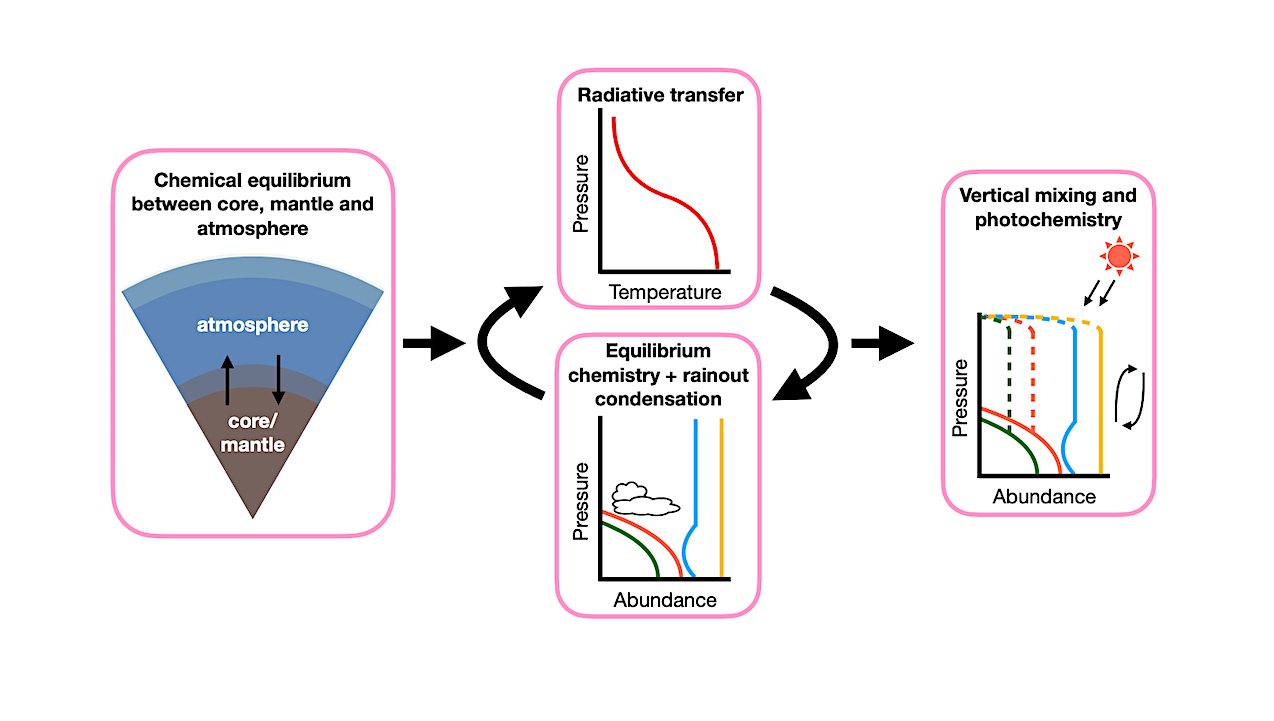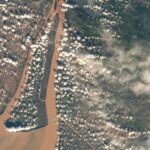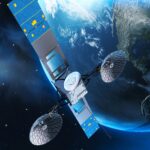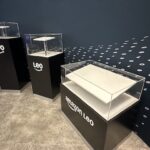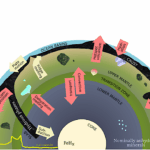Two examples of Martian dunes with linear dune gullies. North is up in both images. (a) Linear dune gullies on a dune field in Galle crater (HiRISE image ESP_077477_1280_MIRB). (b)
Astrobiology39- Page
Top: Simulated EVE observation of an exocomet transit of a K7V at 100 pc expected during a 20 d stare at ∼20 Myr Theia 43 or 45 associations. We scale
Mass distribution inside the plume (left) and leaving the plume (right) for the different particle sizes along the plume vertical extent for the low (top) and high (bottom) plume cases.
Snapshots maps of horizontal winds 10 m above the local surface (m s−1 ) at midday (left) and midnight (right) in the centre of the Equatorial (top) and Polar (bottom)
A hydrothermal vent on the Mid-Atlantic Ridge. Hot, mineral-rich fluids are distributed throughout the ocean via the dispersion cloud, known as the plume. The photo was taken during the M190
Using the James Webb Space Telescope’s (JWST) Mid-Infrared Instrument (MIRI), researchers detected organic molecules with more than six atoms frozen in ice around a young star called ST6 forming in
Scientific Society For Astrobiology (SSA) Incorporated in May 2022, the SSA is a professional society that advances the field of astrobiology by fostering collaborations amongst members and helping to boost
Sketch of the protoplanetary disc structure. In the inner region of the disc, where the gas is sufficiently hot (𝑇c > 𝑇crit), the gas is ionized and well-coupled to the
The abstract in PubMed or at the publisher’s site is linked when available and will open in a new window. Brunstetter TJ, Mason SS, Osborne S, Young M, Oswald T,
Schematic of the modeling framework used in this study. Chemical equilibrium between the core, mantle and atmosphere is calculated using the model from H. E. Schlichting & E. D. Young
-
 012024 in Review: Highlights from NASA in Silicon Valley
012024 in Review: Highlights from NASA in Silicon Valley -
 02Panasonic Leica Summilux DG 15mm f/1.7 ASPH review
02Panasonic Leica Summilux DG 15mm f/1.7 ASPH review -
 03From Polymerization-Enabled Folding and Assembly to Chemical Evolution: Key Processes for Emergence of Functional Polymers in the Origin of Life
03From Polymerization-Enabled Folding and Assembly to Chemical Evolution: Key Processes for Emergence of Functional Polymers in the Origin of Life -
 04How New NASA, India Earth Satellite NISAR Will See Earth
04How New NASA, India Earth Satellite NISAR Will See Earth -
 05And Thus Begins A New Year For Life On Earth
05And Thus Begins A New Year For Life On Earth -
 06Astronomy Activation Ambassadors: A New Era
06Astronomy Activation Ambassadors: A New Era -
07SpaceX launch surge helps set new global launch record in 2024


